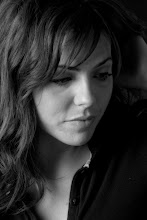The Gilded Age and it's "high society" of the time completely facinates me. The parties, the etiquette, the fashion. . .it is all just as fabulous and glitzy now as it was then. Of course being a makeup artist and seeing photographs and paintings of high society women lead me to do a little research into their beauty rituals and use of cosmetics, and how different the standard of beauty was then than it is now.
Sickly was IN!
Yes, looking pale and undernourished was actually a "good" thing that made the gentelmen drool, apparently. Drop some (what we now know to be poisonous) Belladonna in your eyes to make them look wistful and large? Yes, that was perfectly acceptable beauty secret at the time. Taking elaborate measures to keep one's skin as pale as possible meant staying out of the sun (parasols and gloves weren't just a fashion statement . . .they kept the sun's rays away) as well as employing other not so healthy measures to further whiten the skin. Arsenic on the face?! Yup. This was seen as a luxury powder to keep the skin pale, which of course was the fashion. Or you could opt for "harmless" arsenic tablets. Yikes.
Makeup = bad for your social status because it meant you had loose morals!!
This mostly applied in the years prior to 1910, when using anything more than a bit of powder would imply that you were a woman of undesirable social standing. (A.K.A. a . . .ahem . . .whore. . .or worse, an actress!). A few years down the road "full" make-up was seen as sinful but women were now allowed to apply some pink tones to their cheeks to give a little bit of a glow. Red beet juice was a popular choice for this, and would be rubbed in to the cheeks and SHAZAM! Instant gilded age fabulousness, and ready for a party!
Later on, just before the roaring twenties were in full swing, women began experimenting with henna around the eyes and droplets of wax to lengthen and burnt matches to darken the eyelashes. I am SO glad mascara evolved because that sounds downright dangerous and time consuming. From the 1920's on, the use of cosmetics was socially acceptable, with dark lipsticks and colored eyeshadows the norm. By the 1930's and on red lipstick was practically a social necessity.
Your beauty arsenal consists of two things! A "complexion soap" and cold cream!!
Wow, so different from all of our tonics, serums, boosters, and exfoliators!! These were simpler times, and all one needed was a good facial soap, often laden with lard or sulfur, and a facial moisturizer such as Pond's "vanishing cream". Anyone with a less than perfect complexion had the convenience of facial "enameling" which meant that a (certified?) practicioner would fill in acne scars and pock-marks with a lovely complexion enhancing blend of paraffin wax, talc and lead. Awesome. So happy someone decided to invent ProActive instead.
In conclusion: as much as I find the fashion, culture and overall grandness of the Gilded Age romantic and fascinating, I am very greatful to be living in an age of serums, cleansers and masks that will not slowly kill me due to ingredients such as arsenic and lead. Yay technology!
 |
| Pond's Vanishing Cream = MAGIC! |
Have a Beautiful Day!

No comments:
Post a Comment